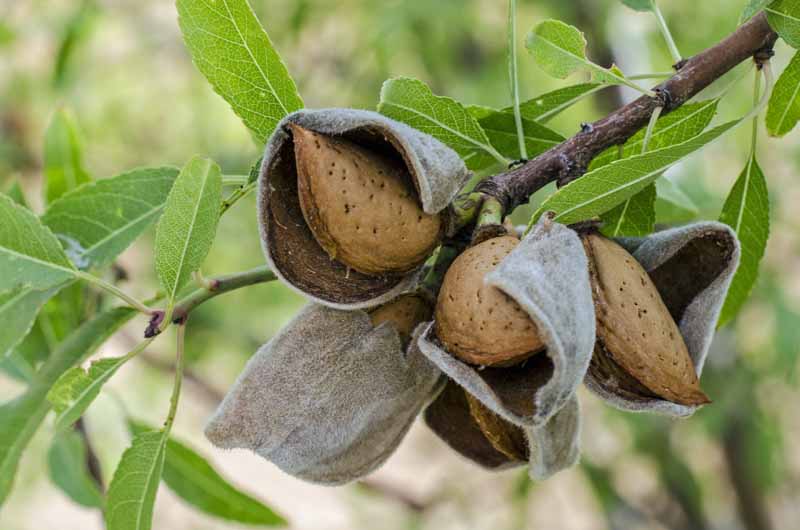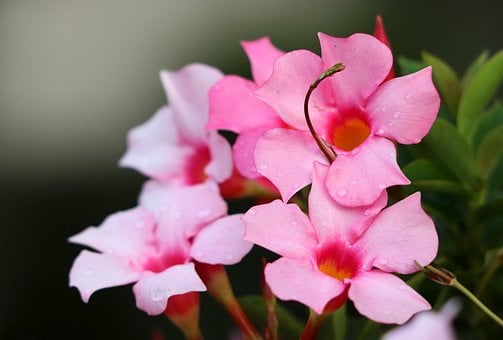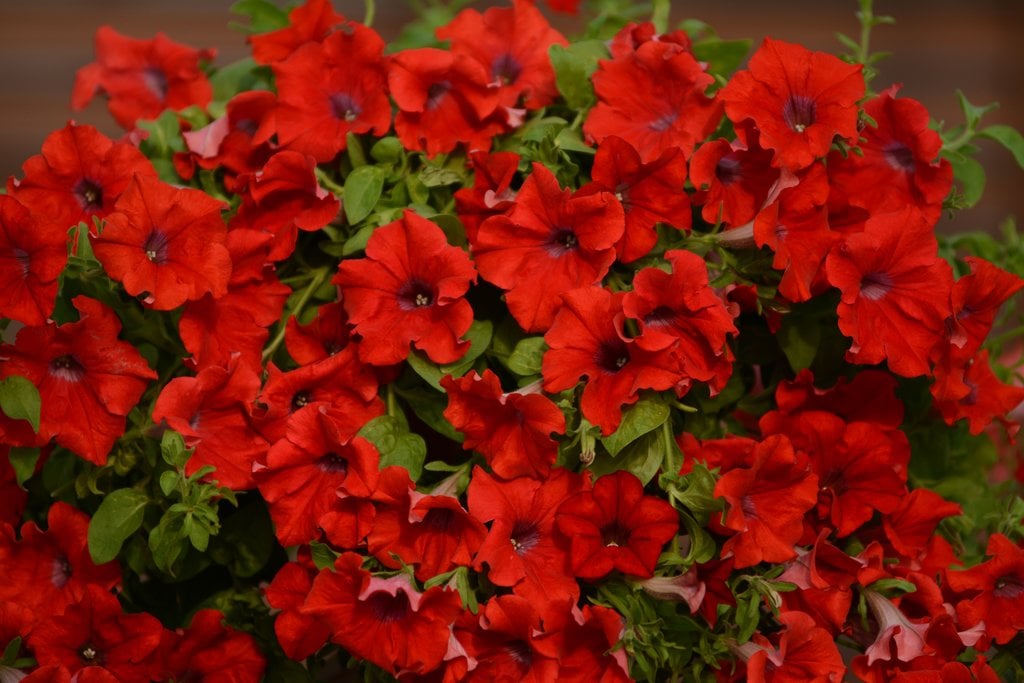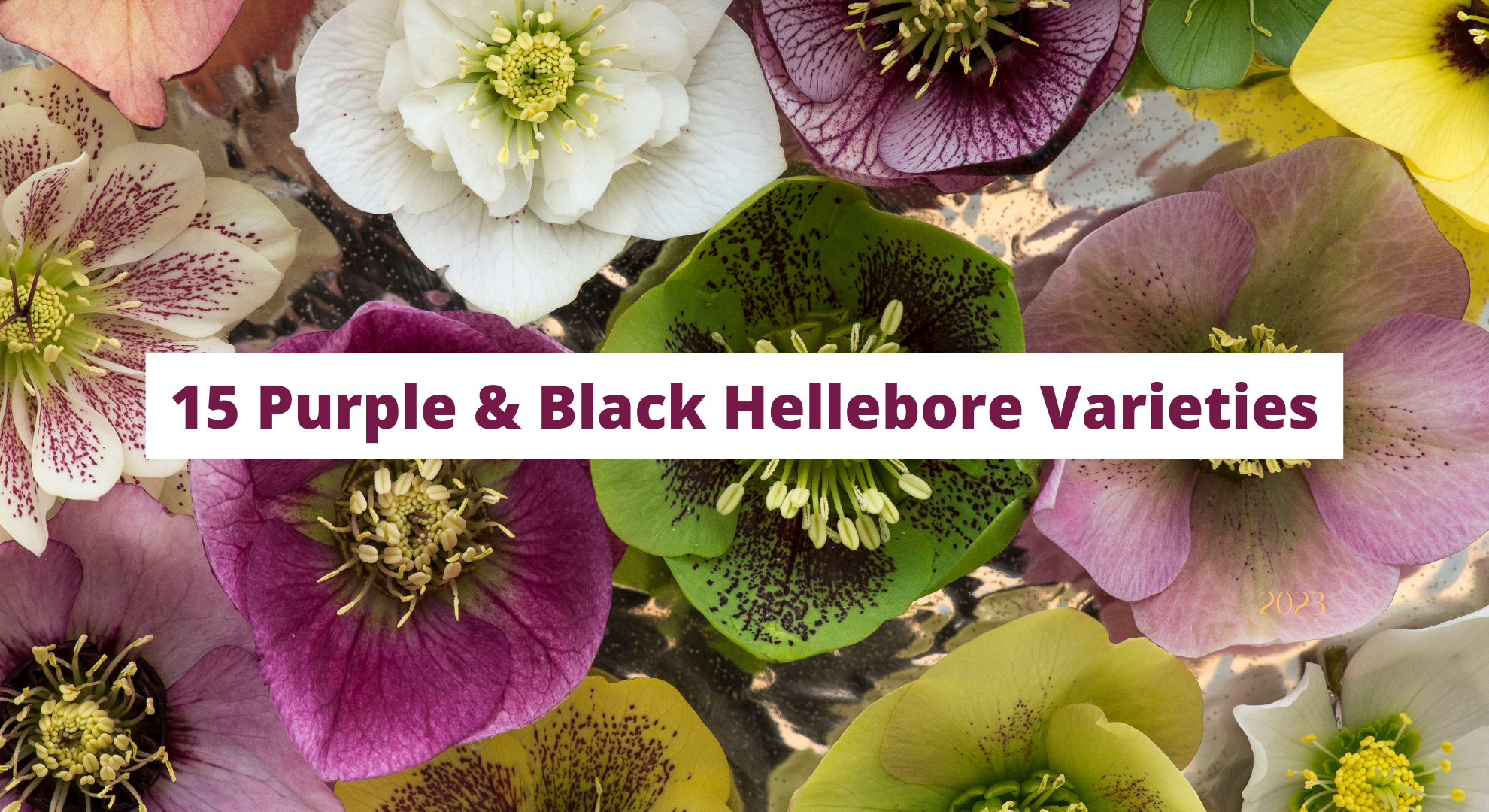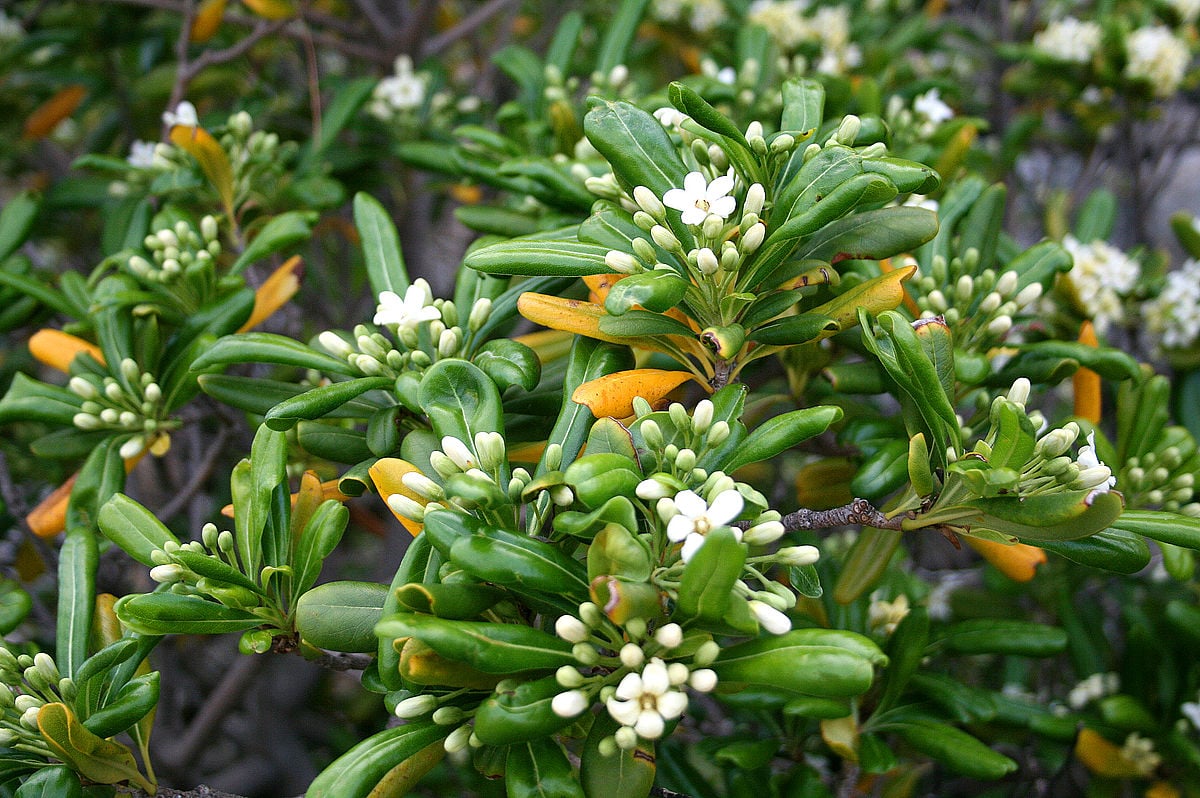6 Tips on How to Grow Ginger Better in the UK
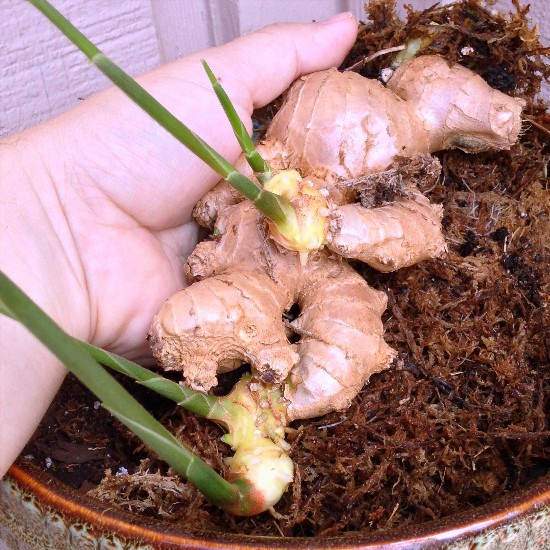
Table of Contents
Before exploring the prospects on how to grow ginger UK having a multi-pronged view of the medicinal spice plant and knowing the characteristics of pseudo-trunked clumps will be helpful. Ginger is a staple in food, drinks, and many traditional medicines.
The top-rated cooking spice has applications in food, confectionery, and additives in medicine for body pain to stomach disorders. You will enjoy ginger in various dishes, such as curries, salads, smoothies, and stir-fries.
Ginger alone has the fame of a distinctive taste and aroma when you cut it. The fresh rhizome graces you with a spicy, peppery, and exhilarating scent of citrus. Now let us look at the methods to grow ginger and how to extend proper care to the rhizome until cultivation under the quest about how to grow ginger UK.
Top Tips on Ginger Planting and Caring for It
Regarding the tips on how to grow ginger UK, the ideal location to grow ginger will be a conservatory or greenhouse. Ginger is best grown as an annual crop as it needs warmth. In warm climates, ginger works best in partial shade, but it can withstand more sun with British temperatures.
1. Best Time for Planting Ginger
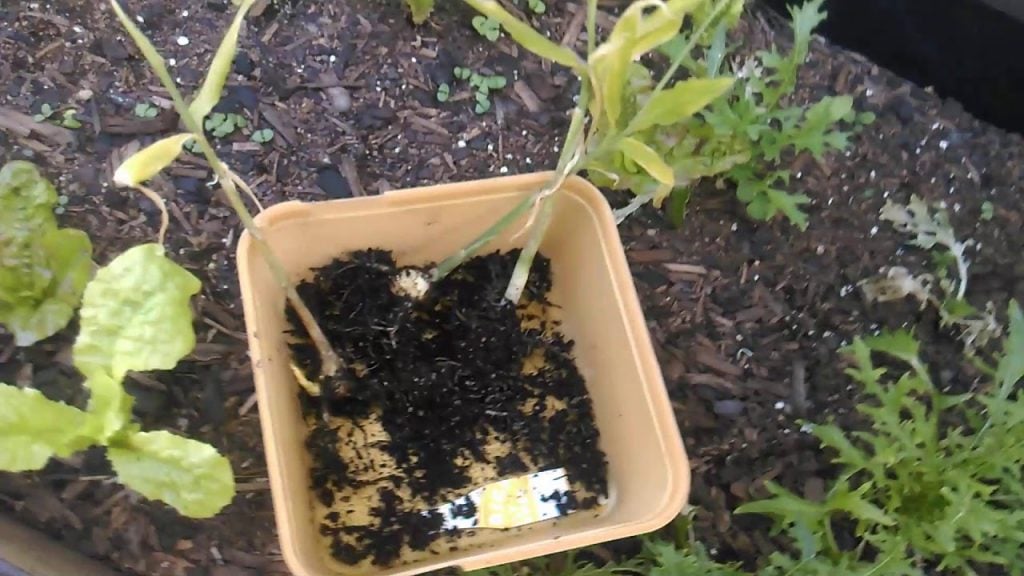
Regarding the best time for ginger planting, early spring is the right time. Ginger, as a tropical plant, grows year-round in a warm climate. In cooler temperatures, you can plant ginger in a pot that may be moved inside during the cold months. Just wait until the first frost has passed off to grow your ginger.
While planting ginger, you may try to have temperatures around 70 to 85°F. Gingers will not withstand winter and frost fall. It is good to soak the ginger rhizomes in water overnight before planting. Plant the pieces directly into the soil or pot about 2 inches deep with the eye bud pointing upwards, and do not forget to water it well. Keep the soil moist and allow the rhizome to enjoy indirect sunlight too.
You can purchase a plant or use a fresh root to sprout it in a seed mix in a warm place with temperatures between 20 and 27C for about 4 to 5 weeks. When sprouts show up, transplant the root to a 10-litre pot, covering the root’s top with 2 inches of soil. You can add more soil as the stems grow taller and provide water to maintain moist soil.
Ginger grows better in double rows, with a space gap of 12 inches with open working space between the double rows. Ginger needs warmth, and summer nights must be cool. The best output from the how-to-grow ginger UK comes if you grow it in a high tunnel or greenhouse. When planting, ensure that you will use only blemish-free roots because some ginger roots may be infected with root-rot diseases and can be contagious to a whole garden.
The ginger plant takes eight to ten months to mature and will be ready for harvest in the winter when the plant starts shedding leaves.
2. How to Plant Ginger?
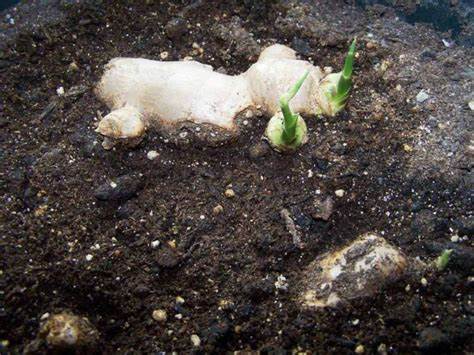
In explaining how to grow ginger UK do follow the tips on planting. Slice a piece of ginger into sections and make sure each piece has two ‘eyes’ to provide shoots. If you cut the ginger, give time to cure the wounds by sparing for a few days’ rest.
In placing ginger on a seed tray, place it on the surface with eyes facing upwards. Cover the ginger root with compost, still leaving the eyes exposed. Water it mildly and keep it in a warm spot under partial shade.
A couple of days later, ginger will develop roots and shoots. The next step is transplanting the seed tray into a pot of compost, covering it with at least 5cm of compost. Ensure the stem sticks upwards, and you are watering it, and it is draining out.
3. Choose the Best Location
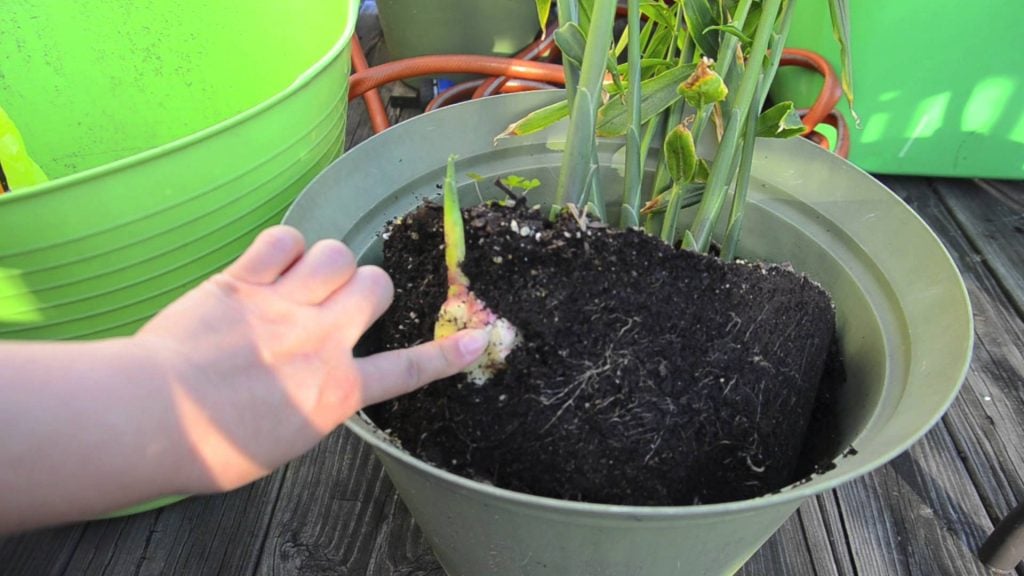
Ginger thrives in partial shade and needs two to five hours of sun a day. If you are planting ginger in a pot, use a plastic pot of at least 12 inches in depth. In how to grow ginger, UK tips do factor in the special tips on growing ginger in cold climates with harsh winters. Plant it in a pot for the flexibility to move the ginger indoors in the winter.
4. Soil Conditioning
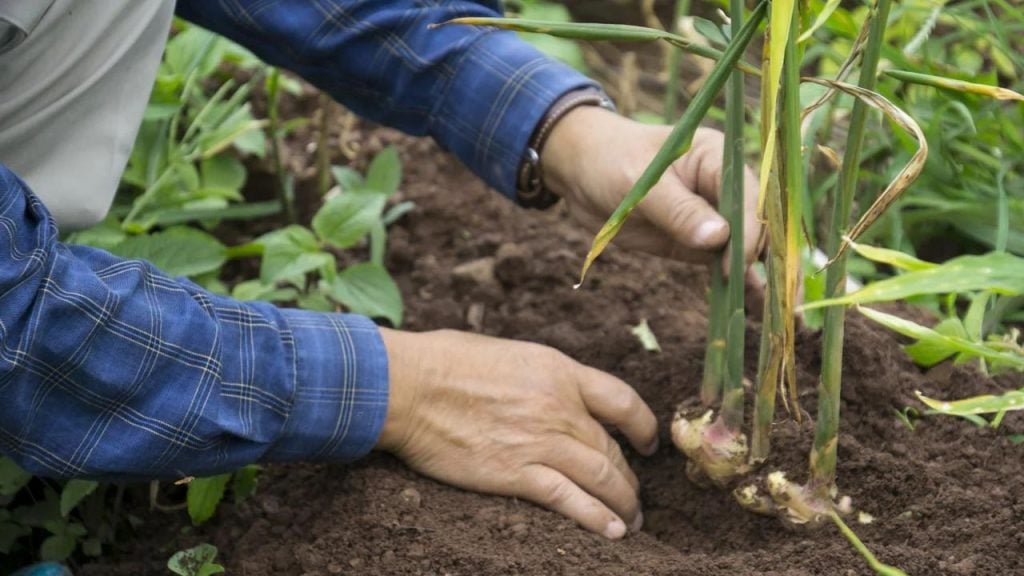
Prepare a combination of potting soil with mulch at a place that is well-draining to prevent rot. Note that mildly acidic soil is always better for ginger, and the soil or potting mix has a pH of 6 to six-and-a-half. Go for dry mulch to ape natural conditions of ginger when you want to grow it in the home garden. You can mix wood chips, sawdust, grass clippings, straw, dead leaves, hay, and wood shavings over the compost you have gathered for the ginger plant. If the wood shavings are from sapwood, they will be rich in nutrients and minerals. In making the mulch, never let grass clippings dominate. Grass clippings with a sizable portion of shredded wood and wood shavings will be alright.
5. Prepare the Ginger Root
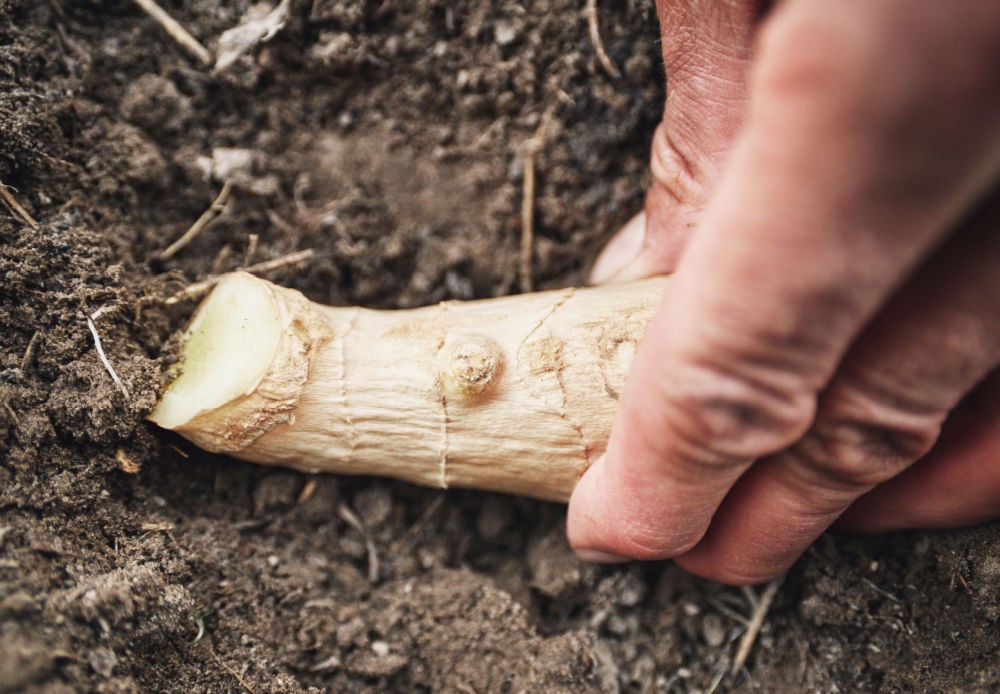
The most common variety of ginger is Zingiber Officinale, available from local grocery stores. In choosing a ginger root to plant, look for roots that are plump and young. Those with growth buds on the tips are the best candidates, as they are already beginning to grow. You can plant an entire ginger root for one plant, cut it into many, and let it dry for a day to form the callus. Make sure that each piece has the nodes at the ends of the plant so that sprouting is trouble-free.
6. Water Your Ginger
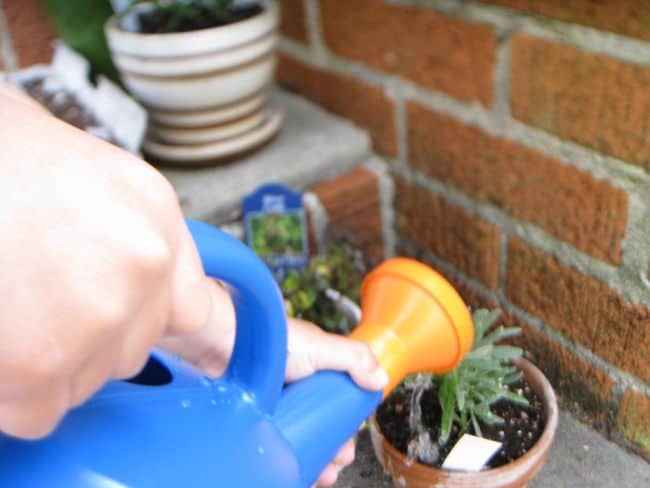
Water your ginger root directly after you plant it. Keep the soil moist but not saturated. Water it until the soil dries out. By the end of summer or early fall, the stems will start dying. As the stems die, the watering must end completely.
Ways to Care for Ginger
You have to pay attention to many priority areas for the perfect harvesting of ginger.
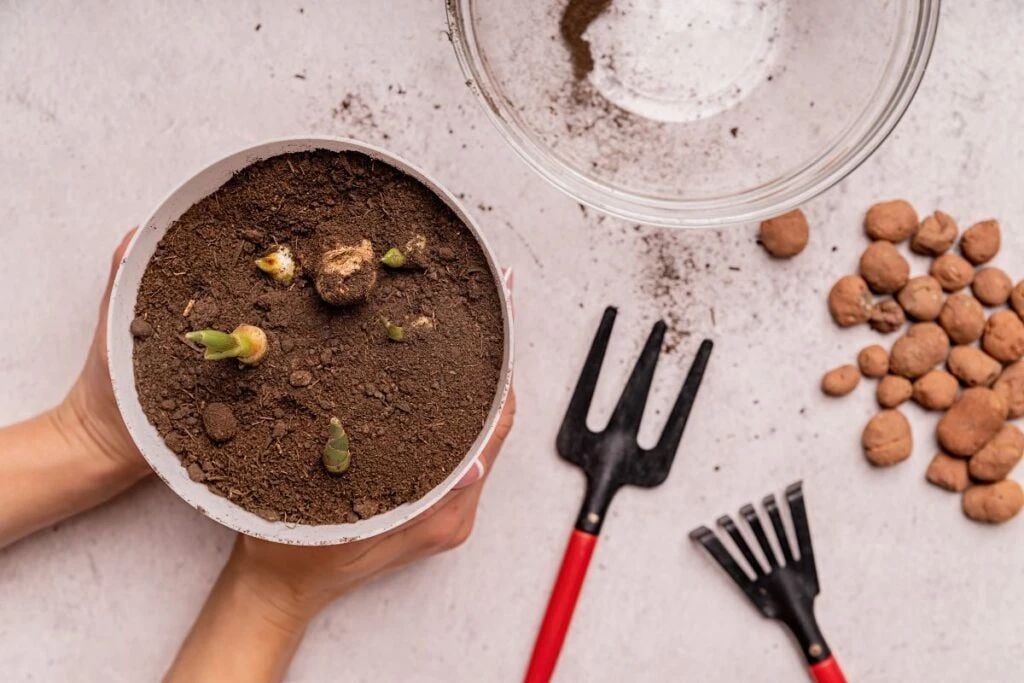
Fertilizer: You can also use a liquid fertilizer every three weeks in the summer. If the weather is cool, you may fertilize once a month.
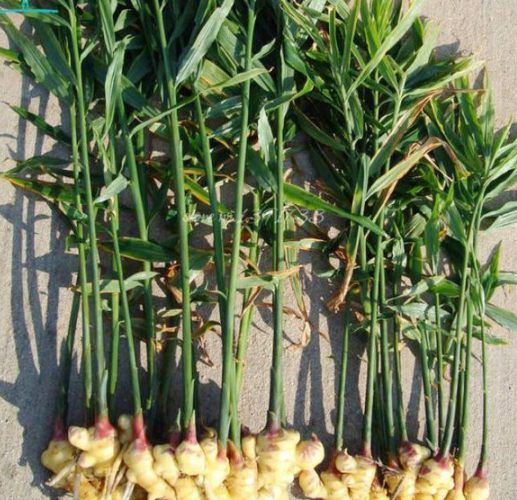
Spacing: Ginger grows about 3 feet tall, so don’t plant it next to shorter vegetables. Ginger needs a space gap of about 12 inches between plants.
Water the ginger plant regularly without making the soil unduly waterlogged. If the ground is too wet, root rot is likely to happen. In sweltering weather, you can moist ginger leaves with water to mimic a humid environment. The plant starts dying in autumn, and there is no need for further watering at this stage.
Challenges from Diseases While Growing Ginger
Bacterial Wilt: It is caused by soil-borne pathogens whose manifestation is the curling of ginger leaves and turning yellow. The plant starts dying, and the rhizomes become stunted with rotting from the inside. The best treatment is to rotate crops and ensure the soil is free draining. Till the soil in the winter and solarize there had been wilting before.

Fusarium: Fusarium is a fungus that attacks like a bacterial wilt. The symptoms take a longer time to show up. There will be yellow and stunted shoots when you pull the rhizome. The yellowing is s signal that damage has already occurred. Avoid rotating ginger with tomatoes, peppers, or eggplant because they are vulnerable to the same pathogens.
Root-knot Nematode: Nematodes would cause ginger leaves to wilt in hot weather. The plant will lose vigour, and if you dig, the rhizome will show wet spots. The parasite nematode can be mitigated in a limited way by pouring hot water for about 10 minutes before planting.
Harvesting of Ginger
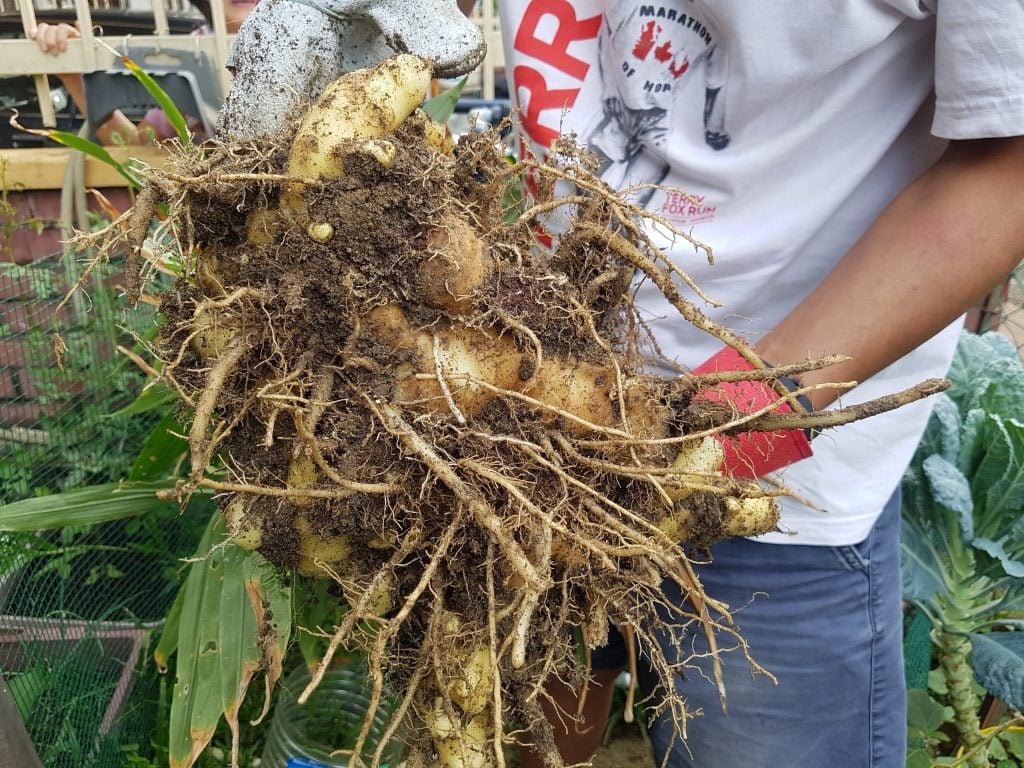
Ginger plants have to attain maximum maturity before harvesting. It takes 8 to 10 months to reach that level from the planting date. If you plant it in the spring, harvest it in the winter. Allow the ginger root to become dry before harvesting starts. The longer the wait for harvest more vital will be the taste of the roots. Ginger is a cash crop and grows in many altitudes. But the ideal elevation is 1500 above mean sea level (MSL). Being a tropical plant, ginger needs a warm, humid climate, rich soil, and shady places.
You can harvest ginger after 8–9 months of sowing. Although ginger is home to tropical and subtropical forests of Southeast Asia, it can grow well in the UK, too, provided you can keep off the frost.
Important Ginger Varieties
Chinese or common ginger is mainly seen in the grocery store. Other Ginger cultivars include the following:
• Rio de Janeiro
• Nadia
• Guangzhou
• Shandong Laiwu
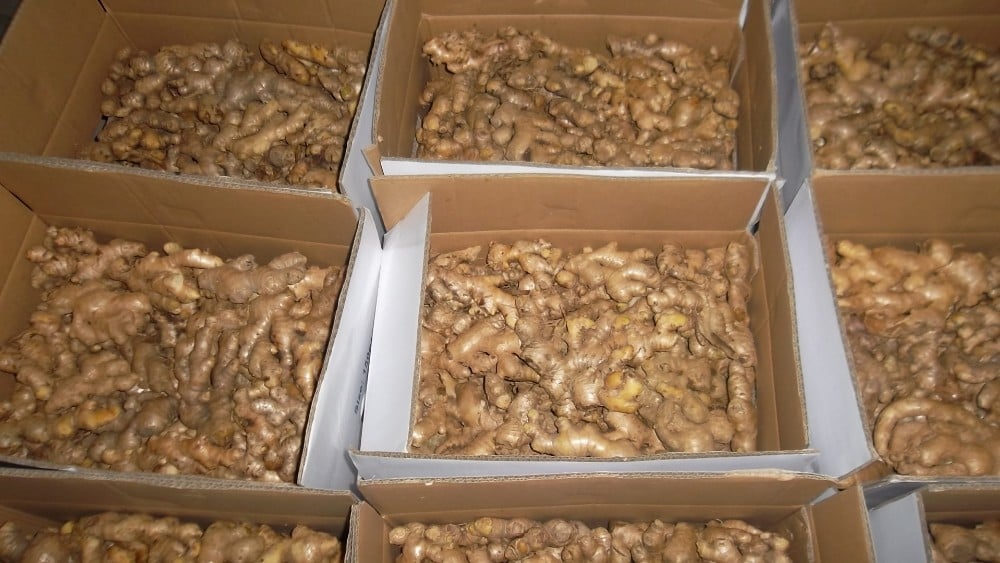
How to grow ginger at home: Growing ginger at home is simple. Pick up some fresh ginger root from the grocery market. Select the ones with firm, plum roots and ‘eyes’ protruding as future stems. Plant the ginger root in a seed tray and cover it with shallow compost.
In outdoor planting, bury your ginger roots two to four inches below the soil at least eight inches apart. If planting in a pot, place just one piece because it needs space. If any roots are sprouting, plant them in a way the buds are pointing upwards.
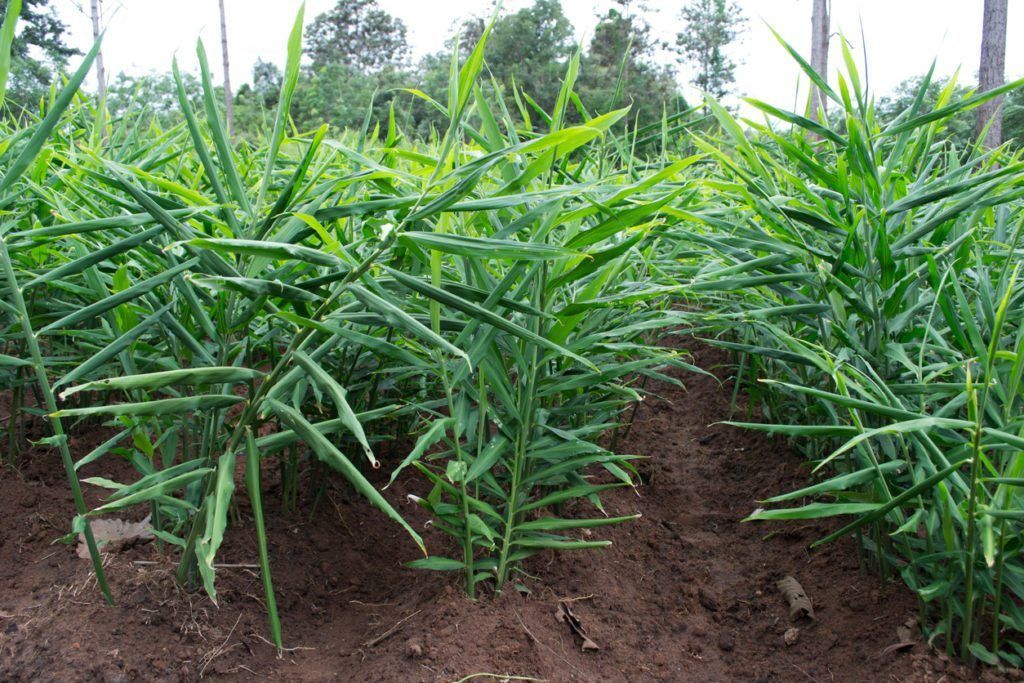
Make sure it is kept in a warm spot for at least 6 weeks to allow shoots to sprout. After that, start potting onto a fresh pot with more compost as stems pick up growth. Irrigate well to harvest in the autumn.
Benefits of Growing Ginger in Containers
Extrapolating the how-to-grow ginger UK tips, ginger enthusiasts growing in pots stand for explicit benefits. One is that you can move the pots indoors when it is too cold outside. Try using large containers and plant several rhizomes in a single pot. Growing ginger in large pots with filtered sunlight gives better results. But do not forget to water regularly.
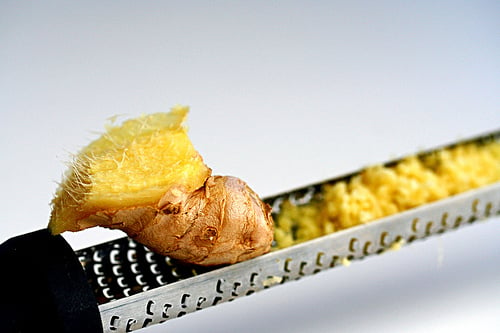
The medicinal uses of Ginger help it fight chronic diseases such as high blood pressure, heart disease, lung diseases, and healthy ageing. Ginger is a sought-after ingredient in food with its vast antioxidants that arrest damage to the body’s DNA and ageing.
Conclusion
The comprehensive round-up on how to grow ginger UK has given you the insights to cultivate the sought-after rhizome at your premises and tap its commercial value with the scope to make some hefty side income too.
The nutrients in the ginger root have to be another motivation for you to grow ginger and look after your family’s health. When ginger is available at home, you will also save money spent at the grocery store. Ginger, with its latent vitamins, including vitamin B6 and minerals like manganese and magnesium, is superb to mitigate inflammatory concerns and save the body from oxidative damage.
Ginger is also great for improving digestion, boosting immunity levels, and warding off the common cold. In short, growing ginger means opening the path to physical and monetary health, and the tips above will get you the best returns for your effort.


